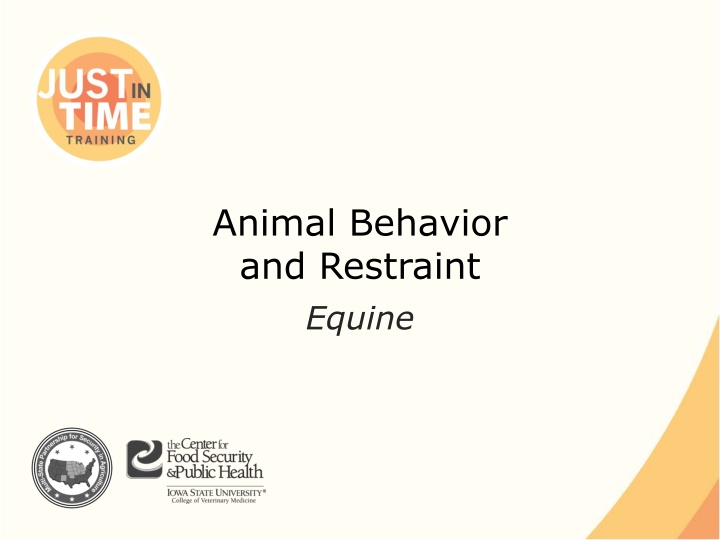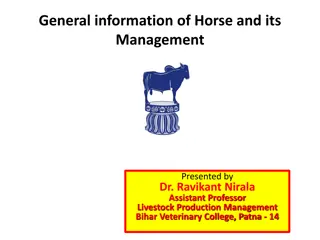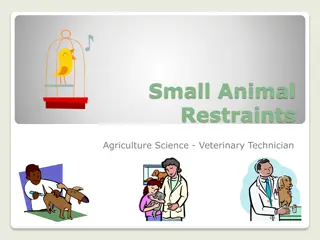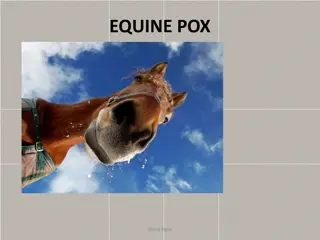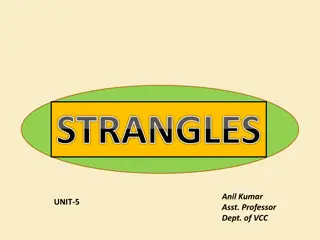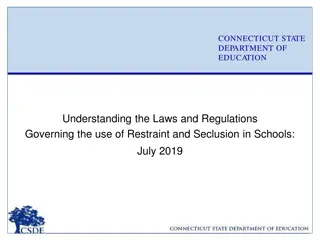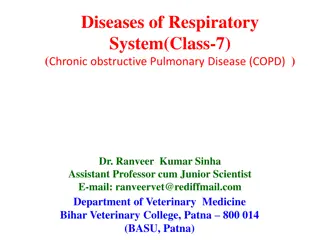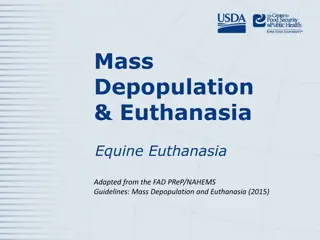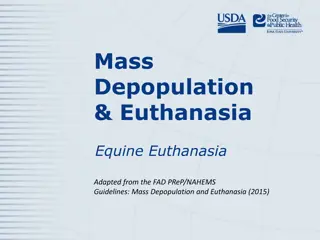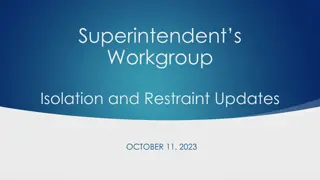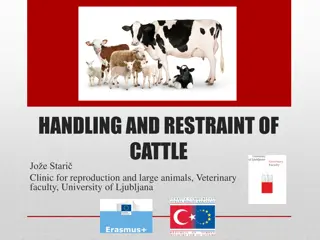Equine Behavior and Restraint: Understanding and Handling Horses
Discover key insights into equine behavior and restraint techniques for safe handling of horses. Explore topics such as normal behavior, body language cues, flight zones, herding and moving horses, capture and containment methods, and post-handling considerations. Enhance your understanding of equine characteristics and learn how to work effectively with these majestic animals.
Uploaded on Oct 05, 2024 | 1 Views
Download Presentation

Please find below an Image/Link to download the presentation.
The content on the website is provided AS IS for your information and personal use only. It may not be sold, licensed, or shared on other websites without obtaining consent from the author.If you encounter any issues during the download, it is possible that the publisher has removed the file from their server.
You are allowed to download the files provided on this website for personal or commercial use, subject to the condition that they are used lawfully. All files are the property of their respective owners.
The content on the website is provided AS IS for your information and personal use only. It may not be sold, licensed, or shared on other websites without obtaining consent from the author.
E N D
Presentation Transcript
Animal Behavior and Restraint Equine
Equine Characteristics Prey animals Grazers Fight or flight Monofocal and biofocal vision Blind spots Directly in front Directly behind Animal Behavior and Restraint: Equine Just In Time Training
Normal Equine Behavior Herd animals Group together Follow herd leader Anxious when isolated from herd Mothers will protect young Avoid separating mare-foal pairs Animal Behavior and Restraint: Equine Just In Time Training
Body Language Both ears back Angry, threatened, warning Ears slightly back or forward Listening Attentive Tail swishing Agitated Animal Behavior and Restraint: Equine Just In Time Training
Flight Zone Animal s personal space Indicator or possible threat Size determined by Tameness Degree of excitement Animal moves away from things in the flight zone Animal Behavior and Restraint: Equine Just In Time Training
Herding & Moving Equine Startled by sudden movements and loud noises Avoid Abuse Loud noises, yelling Isolating animals Distractions Use slow movements Easily dominated by humans Animal Behavior and Restraint: Equine Just In Time Training
Capture & Containment Tame horses Used to humans Easily penned Wild horses Other horses should be used in containment Avoid running them Use food to entice them Be alert of surroundings Makeshift corrals can be used Wire fencing should be avoided Animal Behavior and Restraint: Equine Just In Time Training
Behavior After Handling Allow access to feed, water, and shelter Extra caution should be taken with stallions Social order must be re-established Be alert of any injuries Animal Behavior and Restraint: Equine Just In Time Training
Restraint Minimal movement Stocks/Chute Hobbles Twitch Halter with chain lead shank Full movement Stalls Corrals Animal Behavior and Restraint: Equine Just In Time Training
Special Considerations Monitor in conditions of high heat or extreme cold Farrier needs Winter weather requires special equipment Heaters or wind break Gritty, non-slip substances Blankets Animal Behavior and Restraint: Equine Just In Time Training
Safety Avoid injuries from equine Kicks Striking Rearing Biting Can inflict injuries with head Will run over you if desperate Animal Behavior and Restraint: Equine Just In Time Training
Additional Information Approaching a Horse Safely. American Youth Horse Council. http://ayhc.com/uploads/approaching-a-horse-safely- 2011.pdf Approaching, Catching, and Haltering Horses Safely. Rutgers Cooperative Extension. http://nasdonline.org/static_content/documents/1043/d00 0837.pdf Techniques for Safely Handling Horses. Oklahoma Cooperative Extension Service. http://pods.dasnr.okstate.edu/docushare/dsweb/Get/Docu ment-2755/E-960.pdf Animal Behavior and Restraint: Equine Just In Time Training
Acknowledgments Development of this presentation was by the Center for Food Security and Public Health at Iowa State University through funding from the Multi-State Partnership for Security in Agriculture Authors: Abbey Smith, Glenda Dvorak, DVM, MPH, DACVPM
